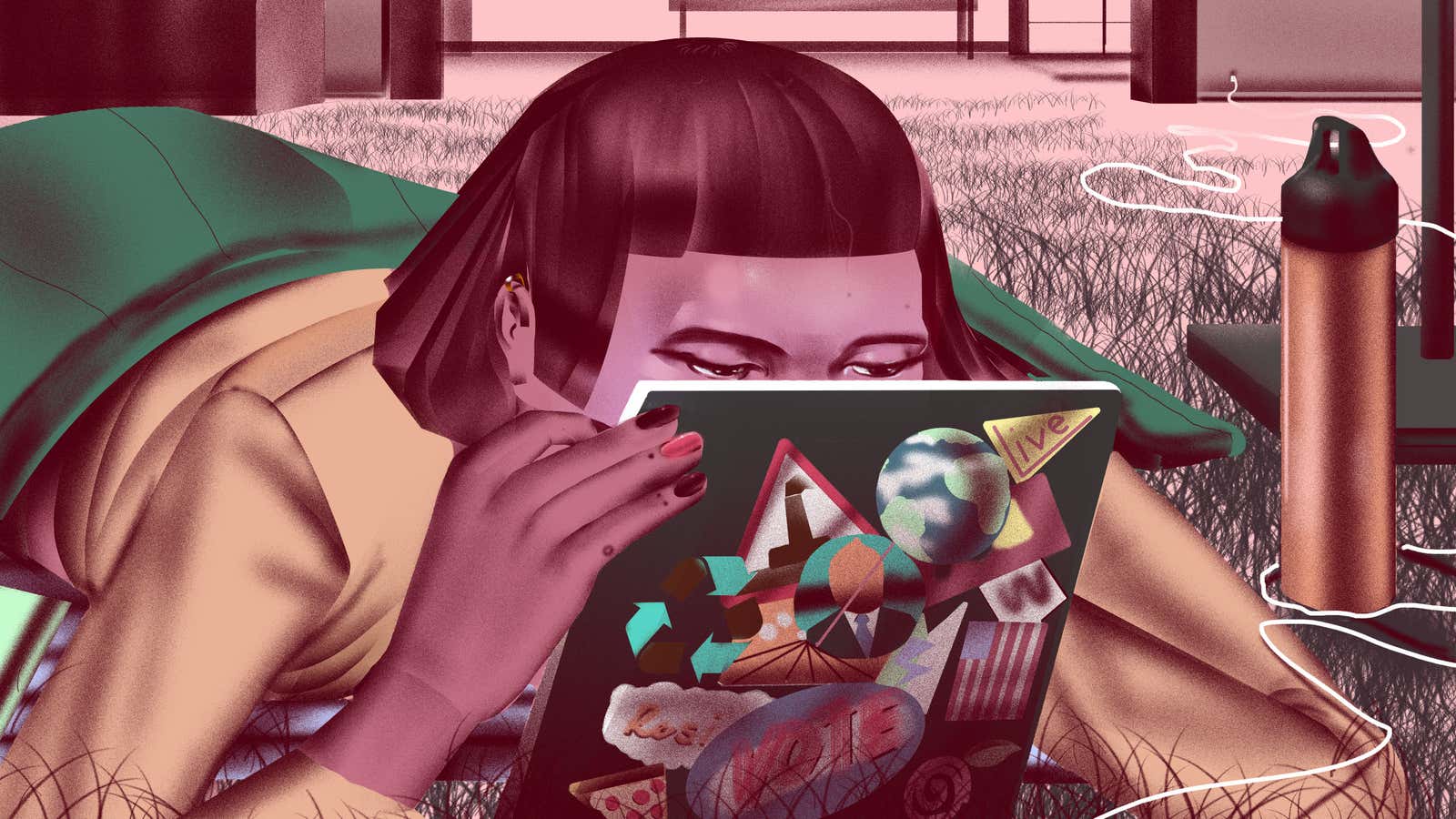For more than two decades, Joel Dinerstein, a cultural historian and professor of English at Tulane University in New Orleans, Louisiana, has been asking his students who and what they consider cool. The author of multiple books on the subject, including 2017’s The Origins of Cool in Postwar America, Dinerstein teaches a course on the history of cool. About five or six years ago, or perhaps a little more—he can’t remember exactly—he noticed a change in what his students were telling him.
“They no longer thought of any given iconic figure or celebrity as cool if they didn’t also have a social activist or political activist—if not an agenda, at least a stance,” he says. “That was completely new. Cool and politics were not really connected for a long time, and certainly not at the beginning.”
When Black Americans first coined the term in the jazz clubs of the late 1930s, a period of racist Jim Crow laws that left little hope of political change, cool described a composed detachment and emphasis on the musician’s individuality. It wasn’t about correcting injustices, but keeping your head despite them. It has since mutated a good deal, growing into an alternate form of status that applies as much to products and brands as people.
In 2020 cool is as influential as ever. Only today, it reflects an era defined by the rising urgency of climate change, by movements such as Black Lives Matter calling ever louder for racial and social justice, by political strife, and not least of all, by social media. Where for most of its history cool was characterized by a reserved dispassion, to be cool now often includes being informed and concerned about what’s happening in the world—or, at minimum, looking like you do. The transformation may be so great that Dinerstein wonders whether coolness as we have traditionally known it could be dead.
The stakes aren’t purely academic. For decades cool has been among the most powerful elements in marketing and integral to the identities of some of the world’s most successful companies. It was key to the brand images Nike and Apple built in the 1980s, and it remains crucial for new generations of companies from Supreme to Tesla. Businesses that fail to understand it may risk their relevance, and with that, their customers. The present atmosphere is changing what those customers consider cool, affecting what they buy, the companies they support, and the public figures they follow.

It’s cool to care
If you’re looking to observe cool in action, there are few venues as reliable as fashion. An industry where sales rely on image and trends more than the pure function of products, it is particularly attuned to cool.
When I recently asked Sara Maggioni, head of womenswear at WGSN, a London-based trend forecaster, what’s cool in 2020, she didn’t list brands, celebrities, or clothing styles. “It’s cool to care now,” she said. “The younger generation wants relationship, they want authenticity, they want more meaningful connection. Education is cool right now. Being politically active. The mindset has definitely shifted.”
Sarah Andelman has a reputation for spotting cool. Before founding brand consultancy Just An Idea, she was co-founder and creative director of revered Parisian concept store Colette, which closed in 2017. She said in an email, “I think what’s cool today is to care for others and for the planet in general.”
Different forms of social consciousness animate some of the industry’s most exciting young and emerging labels. Sustainability is core to the work of French designer Marine Serre, whose moon-print tops and bodysuits have become celebrity must-haves. American Emily Bode devises clothes from thrifted fabrics she upcycles into novel creations for her namesake line. Kerby Jean-Raymond, founder of New York label Pyer Moss, and the new vice president of creative direction at Reebok, has been outspoken on issues of racial justice and at times used his clothes to highlight instances of Black Americans’ overlooked influence on US culture.
Big-name companies, meanwhile, have been at pains to prove their caring credentials. Fast-fashion giants such as H&M and Zara are touting their sustainability efforts. Luxury labels like Gucci built on exclusivity are promoting inclusivity and diversity. Brands now routinely exhort viewers to vote and runway shows include slogans supporting social causes.
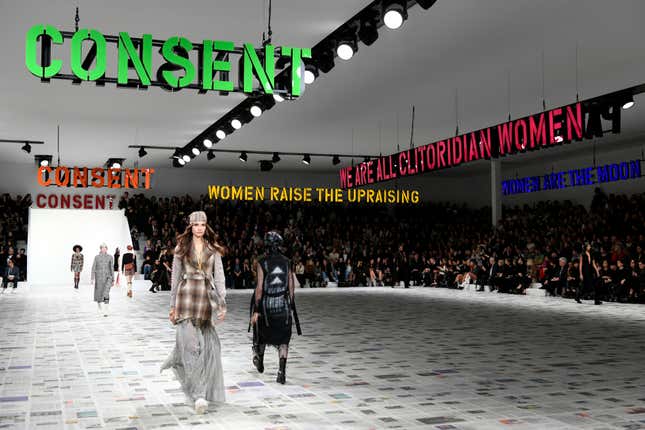
Skeptics might question whether these displays are sincere or for show. Fashion board rooms are still lagging on diversity, even as companies are hiring more diverse models to be their faces. Corporations are calling out racial injustice in the US, but they remain silent on China’s brutal treatment of its Uighur ethnic minority, evidently for fear of losing sales in the lucrative market.
This summer, when Adidas took to social media to condemn racism following the widespread protests over ongoing police killings of Black Americans, it sparked a backlash within the company from Black employees who said the company wasn’t addressing racism in its own workplace. Even so, the displays of caring show companies recognize that taking a stand can be beneficial, and possibly necessary, particularly as they try to appeal to Gen Z shoppers.
Pre-existing ideas of cool haven’t vanished in this atmosphere. Plenty of products and people regarded as cool aren’t overtly linked to social or political activism, from TikTok influencers to sneakers such as retro Air Jordans and lots more. But now even fashion outlets such as Highsnobiety and Teen Vogue mix politics with their coverage of products and trends.
While companies and celebrities occasionally took stances in the past, including icons such as Muhammad Ali, activism isn’t just more common but also carries more weight in how we define cool. Through the late 1980s and 1990s, for example, the coolest basketball player on the planet was Michael Jordan, who famously kept out of politics during his playing years and once joked that Republicans buy sneakers, too. Today the title of coolest basketball player probably belongs to LeBron James, whose social work and advocacy for racial justice are as much part of his image as his game on the court.
In a 2017 study Google commissioned on what teens see as cool, they ranked celebrities who are “philanthropic and genuine” as the coolest (pdf). Having a platform practically necessitates having an opinion. It’s now common to find an actor like Emma Watson promoting feminism, or singers such as Cardi B, Megan Thee Stallion, and Taylor Swift expressing their views on politics or other issues.
“This is something we’ve been talking about for a couple of years, but for sure we are seeing such an acceleration now,” WGSN’s Maggioni says. “You have people who, a couple of years ago, would have never posted something political. Now they feel almost like they have to.”

What “cool” is
Today’s notion of cool looks very different from what preceded it. For decades, the stereotype was being detached and aloof. At its birth, the musical form of cool, developed by musicians such as Lester Young, the jazz saxophonist credited with popularizing the term, meant calm intensity. As opposed to an overheated frenzy, the sound was relaxed and measured—cool.
Listen to a playlist of tracks representing the original sound of cool as it first evolved in jazz.
A similar attitude animated the loner heroes of 1930s noir stories like Sam Spade and Phillip Marlowe, as Dinerstein details in his book on cool’s origins, and later, figureheads of existentialism such as Albert Camus. Their outlook boiled down to resigned self-possession in the face of a senseless or morally corrupt world. Remember, this was the aftermath of global traumas such as World War I and the Great Depression.
In jazz, cool didn’t just break from musical precedents. It also defied ideas of how a Black artist was supposed to perform on stage. The predominately white audiences of the time expected Black musicians to smile and entertain, like Black performers in minstrel shows and movies. Black artists risked losing work or facing violence if they didn’t comply. But in the 1930s, Black jazz musicians began to reject these tropes and present themselves as self-controlled, even unemotional. “The new response to the white gaze of superiority was to drop the grinning black mask—the symbol of accommodation,” Dinerstein writes.
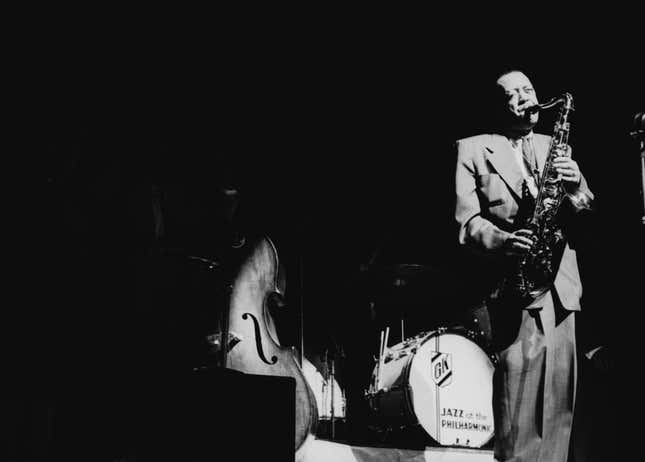
Through the 1940s, jazz-loving white outsiders such as the Beats picked up on cool, including its non-conformist undertones, which could involve hedonism and drug use. They disseminated it to mainstream America, where in the subsequent decades it evolved in response to “the social norms of a materialist and rapidly suburbanizing society,” as Dinerstein puts it. Cool turned into what he describes as an “umbrella term for the alienated attitude of American rebels.” Actors Marlon Brando and James Dean became its face in Hollywood, just at the time teenagers surfaced as a recognized demographic. Perhaps it’s because of their perpetual search for identity and independence, but teens would become some of the biggest consumers of cool.
Though class had traditionally determined social rank, cool took hold as a separate kind of status—one that would prove useful to marketers. By the 1960s, they were mining counterculture to brand and sell products, and in the 1980s, companies such as Nike and Apple were building brand images around rebellion. Cool became commoditized. Yet that note of defiance has persisted through its transformations over the decades, at least as cool is understood in the US and western Europe. (It has different connotations in a country such as India, where it isn’t generally associated with hedonism or deviance.)
Caleb Warren is an associate professor of marketing at the University of Arizona who has been studying cool for 15 years, particularly as it applies to brands and products. His research has found that consumers in the West associate a variety of different attributes with coolness, including aesthetic appeal, originality, high status, and more. But at its core, according to Warren, are really a few essential features. One is an element of being positive or pleasing. “A lot of people will actually just use it as a synonym for ‘I like it,’ or ‘I think it’s good,'” he explains. “But where it becomes its own thing is this other dimension, which is autonomy.”
Autonomy is the willingness to follow one’s own course regardless of what societal norms dictate or others expect. It suggests authenticity, individuality, and even rebellion, which other research has also identified as integral to cool.
This autonomy does have to obey certain rules. In a series of experiments that Warren and Margaret Campbell, a professor of marketing at University of Colorado, summarized in a 2014 paper, they found autonomy increases coolness but only when it’s positive. That means it differs from the norm in a way that isn’t too extreme, or it risks losing its positive spin, and the norm has to be one the perceiver considers illegitimate. Examples could include anything from rejecting stylistic conventions to pushing back against old authorities, as Black jazz musicians did.
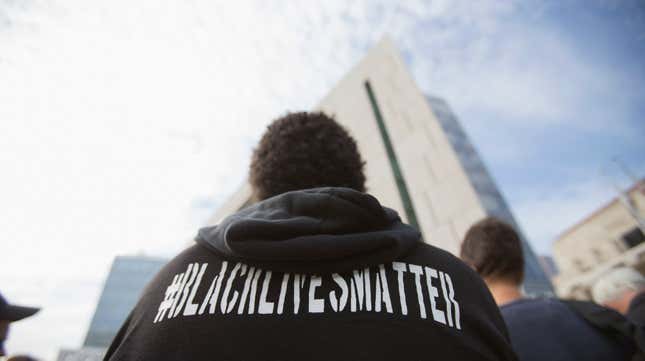
Today, rebuffing outdated or illegitimate norms describes advocating for racial justice, gay rights, feminism, environmentalism, and other issues, suggesting the new activist form of cool isn’t a total departure from the original. It still has a dim view of the world at times, but it’s more optimistic about its ability to change it, or at least to try. The progressive bent is probably no coincidence. Generally speaking, cool is anti-establishment, and conservatives, almost by definition, often seek to preserve the establishment. Dinerstein notes that much of the cultural rebellion tied to cool in the past has aligned more closely with the political left, even if cool wasn’t explicitly linked to activism.
What’s tricky about cool, though, is that it is subjective. Subcultures have their own ideas of cool separate from the mainstream, and different demographics may not agree on what’s cool. Just look at the different reactions to Nike putting former football player Colin Kaepernick in an ad campaign in 2018. The right has had its own emblems of coolness, such as actor John Wayne, who represented a masculine ideal vanishing in a rapidly changing society. In today’s politically charged atmosphere, it could include figures who attack political correctness.
Different standards of cool don’t need to have equal support, and often don’t. The white mainstream in the 1930s, after all, didn’t look favorably on the Black jazz musicians who created our modern idea of cool.

The forces reshaping cool
Movements for racial justice, feminism, and environmentalism have been around for decades, so why is cool changing now? It’s not entirely clear, but a few factors may be involved.
One is generational change, a force perpetually redefining cool. In the US, for example, more than half the population is now millennial or younger. These groups are more racially diverse than their forebears and more likely to support movements such as Black Lives Matter. They’re more educated and less likely to adhere to traditional gender roles (pdf). They’re more concerned about the environment, having grown up understanding climate change as an existential threat. And for some time younger populations have been engaging in more activism, too.
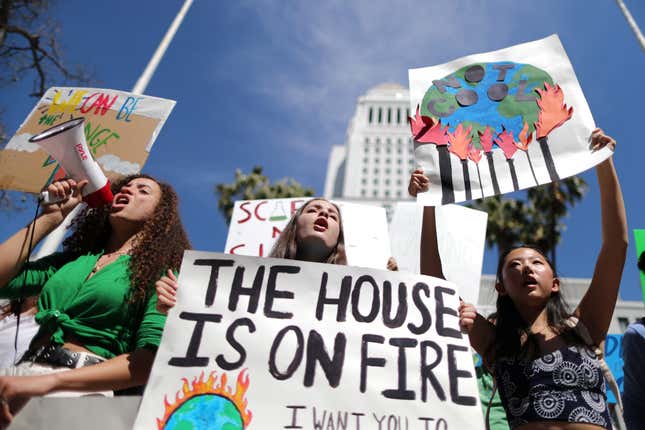
“What society views as positive changes over time,” Warren says. “So as these issues become viewed more positively by society, you’re more likely to see if people can stand out on those issues, or advance them beyond what was normally being done. And they might seem more cool.”
Another undeniable influence—one that’s helped shape the beliefs of those younger generations—is the internet, and particularly social media. It has fundamentally changed the way information spreads and how people connect. Voices that had little means of being heard before now have a megaphone, and injustices that were once only visible to those affected, such as police brutality, are now seen by all, engaging even those who aren’t directly involved. The Black Lives Matter protests this June, which reached far past Black communities in the US to include demonstrations all over the world, would hardly have been conceivable without video footage of police violence spreading online.
It has created new norms, and new behaviors have followed. Much as class markers look different today, some of the ways we perform cool have shifted. Social media has become one of cool’s most powerful venues, joining—if not overtaking—mediums like television and movies. While being cool still involves showing off style or individuality, it may also come with a display of caring about topics like social justice or climate change. At its worst this dynamic can lead to empty performative activism, which actual activists and experts say isn’t helpful and can be counterproductive. But the activism can be genuine too. People are multi-faceted, after all, and living in modern society frequently means navigating all these currents simultaneously.
Has the idea of cool changed so much, though, that it’s not actually the same thing anymore? “I have wondered for a good six to 10 years whether or not cool is itself dead,” Dinerstein says. “Like whether it was a certain sensibility or certain quality, it lasted for 60, 70 years, and now whatever we want to call it, it’s already something different.”
For maybe the first time since the 1960s, he notes, politics has subsumed everything else and made the traditional signifiers of cool, such as style, less important. At the same time, social media has redrawn the cultural landscape.
“This is another reason why that whole detachment aspect of cool has disappeared: Social media almost requires you as that kind of [celebrity] figure, or even as just a person, to constantly be engaged,” he says. “That’s why I have a problem as a theorist and historian who analyzes cool figuring out where cool is at the moment, because all of the rules by which it was formed and sustained itself have completely been upended by social media.”
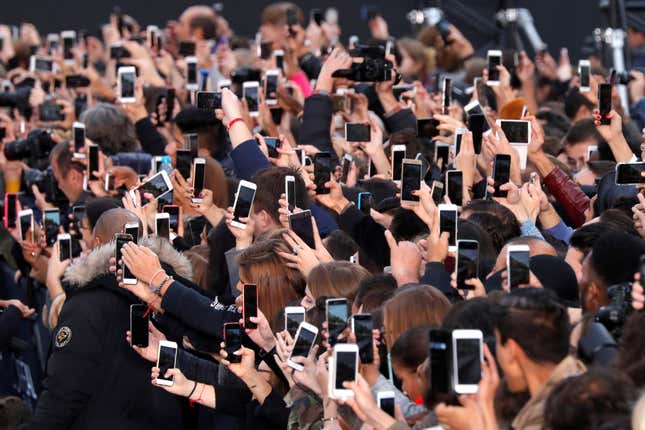
Warren doesn’t believe cool is fundamentally different than in the past, but he does think social media is causing notable shifts. “One, it’s probably sped up the cycles, so things become cool quicker and lose their coolness quicker, because the information is traveling so much faster,” he says. “The other thing is it might have democratized it a bit more.”
Every industry generally had a set of insiders dictating what was cool. In music that might have meant certain artists, record labels, or DJs. In fashion it might have included select designers, editors, or stores. Now, because of platforms such as Instagram, YouTube, and SoundCloud in the West, or in China a sprawling network like Weibo, there may be thousands of figures with followings large and small—the so-called microinfluencers—shaping tastes and trends.
Experts have similarly argued the mass market is fragmenting into a universe of micro-markets, formed of communities coalesced around shared tastes and beliefs. In fashion, for instance, critics have said trends don’t work as they once did. There are fewer era-defining looks and more niche styles that quickly rise and fall in popularity. Big trends can still appear. Streetwear, a style with roots in skate culture and hip-hop, has been a dominant force in recent years. But consumer communities dictated its popularity, and the industry establishment followed their lead.
Cool’s future may look like a constellation of different niche ideas of cool, split along political lines, where mass cool becomes harder to achieve. Maybe the only certainty is that what’s cool will continue to change, following the lead of wider society, shaping how companies and public figures act.
